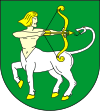 Alternate names: Lutomiersk [Pol, Yid], Lutamiersk. ussian: Лютомерск. לוטומיירסק [Yid]. 51°45' N, 19°13' E, 11 miles W of Łódź, 12 miles NNE of Łask. 1900 Jewish population: about 800. Yizkor: Pinkas ha-kehilot; entsiklopediya shel ha-yishuvim le-min hivasdam ve-ad le-aher shoat milhemet ha-olam ha-sheniya: Poland vol. 1: The communities of Lodz and its region (Jerusalem, 1976). Lutomiersk village in Pabianice powiat, Łódź Voivodeship in central Poland is the seat of the administrative district called Gmina Lutomiersk. The village is 17 km (11 mi) NW of Pabianice and 19 km (12 mi) W of the regional capital Łódź with population of about 1,500. Gmina Lutomiersk contains the villages and settlements of Albertów, Antoniew, Babice, Babiczki, Bechcice-Parcela, Bechcice-Wieś, Charbice Dolne, Charbice Górne, Czołczyn, Dziechtarzew, Florentynów, Franciszków, Jerwonice, Jeziorko, Kazimierz, Kolonia Bechcice, Legendzin, Lutomiersk, Madaje Nowe, Malanów, Mianów, Mikołajewice, Mikołajewice-Kolonia, Mirosławice, Orzechów, Prusinowice, Prusinowiczki, Puczniew, Puczniew-Leonów, Stanisławów Nowy, Stanisławów Stary, Szydłów, Szydłówek, Wola Puczniewska, Wrząca, Wygoda Mikołajewska, Zalew, Zdziechów, Zdziechów Nowy, Zdziechów-Kolonia, Żurawieniec and Zygmuntów. The cemetery was consecrated at the beginning of the 18th century when the Chevrah Kadisha was established. About 1750, a shelter for the poor was set up. In the early 1780's, a wooden synagogue designed by Hillel Beniamin from Łask was built and burned down in 1915. photos. Jewish history. [May 2009]
Alternate names: Lutomiersk [Pol, Yid], Lutamiersk. ussian: Лютомерск. לוטומיירסק [Yid]. 51°45' N, 19°13' E, 11 miles W of Łódź, 12 miles NNE of Łask. 1900 Jewish population: about 800. Yizkor: Pinkas ha-kehilot; entsiklopediya shel ha-yishuvim le-min hivasdam ve-ad le-aher shoat milhemet ha-olam ha-sheniya: Poland vol. 1: The communities of Lodz and its region (Jerusalem, 1976). Lutomiersk village in Pabianice powiat, Łódź Voivodeship in central Poland is the seat of the administrative district called Gmina Lutomiersk. The village is 17 km (11 mi) NW of Pabianice and 19 km (12 mi) W of the regional capital Łódź with population of about 1,500. Gmina Lutomiersk contains the villages and settlements of Albertów, Antoniew, Babice, Babiczki, Bechcice-Parcela, Bechcice-Wieś, Charbice Dolne, Charbice Górne, Czołczyn, Dziechtarzew, Florentynów, Franciszków, Jerwonice, Jeziorko, Kazimierz, Kolonia Bechcice, Legendzin, Lutomiersk, Madaje Nowe, Malanów, Mianów, Mikołajewice, Mikołajewice-Kolonia, Mirosławice, Orzechów, Prusinowice, Prusinowiczki, Puczniew, Puczniew-Leonów, Stanisławów Nowy, Stanisławów Stary, Szydłów, Szydłówek, Wola Puczniewska, Wrząca, Wygoda Mikołajewska, Zalew, Zdziechów, Zdziechów Nowy, Zdziechów-Kolonia, Żurawieniec and Zygmuntów. The cemetery was consecrated at the beginning of the 18th century when the Chevrah Kadisha was established. About 1750, a shelter for the poor was set up. In the early 1780's, a wooden synagogue designed by Hillel Beniamin from Łask was built and burned down in 1915. photos. Jewish history. [May 2009]
There were two, not one, Jewish cemeteries in Lutomiersk. The older one near the main road (at the crossroads Alexandrow-Szadek-Pabianice ) can be recognized only as a strangely regular hill with many houses on it, but I know people, who remember its function and how it looked. Now, houses and gardens are in this place with no memory at all of it as a Jewish cemetery except a cross standing nearby as a misplaced memorial sign. No Jews buried here are mentioned in the commemorative tablet of course. This old cemetery seems to be completely ignored in the survey; and yet it was the original cemetery of this Jewish community. The one described above was founded later after the commuity had expanded. As to that other cemetery, it is really a nice place to see with a brook flowing along it . Alas, it is becoming more and more neglected and encroached upon by the residents. I had the impression last time I was there it had lost much of its area as a result of arbitrary enclosures. Somewhere in the middle of it, I think, one was confronted with a fence. By the way, my mother as a child saw one of the last - if not the last - funeral and burial in this cemetery. She often recalls this event as she was living not far from the place -- by the road to the village of Bechcice where she had been born. This must have taken place sometime early in the summer of 1942. Source: Jan Gluszak at This email address is being protected from spambots. You need JavaScript enabled to view it. [November 2002]
US Commission No. POCE000684
The town is in the region of Sieradz at 57º45N 19º73E, 19 km from Todz. The cemetery is located in Warzyca, a suburban village. Present population is 1000-5000 with no Jews.
- Town: Urzad (Office) Gminy, 98-135 Lutomiersk, tel. 11.
- Regional: Wojewodzki Konserwator Zabytkow Sieradzu, 98-200 Sieradz, ul. Kojeinszki 3, tel. 849-3815.
- Interested: Urzad Wojewodzki w Sieradzy, Plac Wojewodzki 3; 98-200 Sieradz, tel. 849-71666. Tydowski Instytut Historyczuyw Polsce; ul. Flomackie 315, 00-090-Warszawa; tel 27-92-21.
The earliest Jewish community in the town was 18th or possibly 17th century. 1921 Jewish population was 775, 35.3%. The Jewish cemetery was established in the 18th century with the last known Orthodox/Conservative Jewish burial 1942. Other towns also used the cemetery. The isolated suburban rural/agricultural flat land has no sign or marker. Reached by turning directly off a public road, access is open to all with no wall, fence or gate around the cemetery. The size of the cemetery is about 2 ha. No stones are visible. There are no known mass graves. The municipality owns property used as cemetery and agriculture (animal grazing). Properties adjacent are agricultural and residential. Occasionally, organized Jewish groups, organized individual tours, private visitors and local residents visit. The cemetery was vandalized during World War II, but not in the last ten years. Security, pollution, and vegetation are moderate threats, weather erosion, vandalism, and development are slight threats.
Adam Penkalla, deceased, completed survey in November 1992. He used private documentation and visited the site.